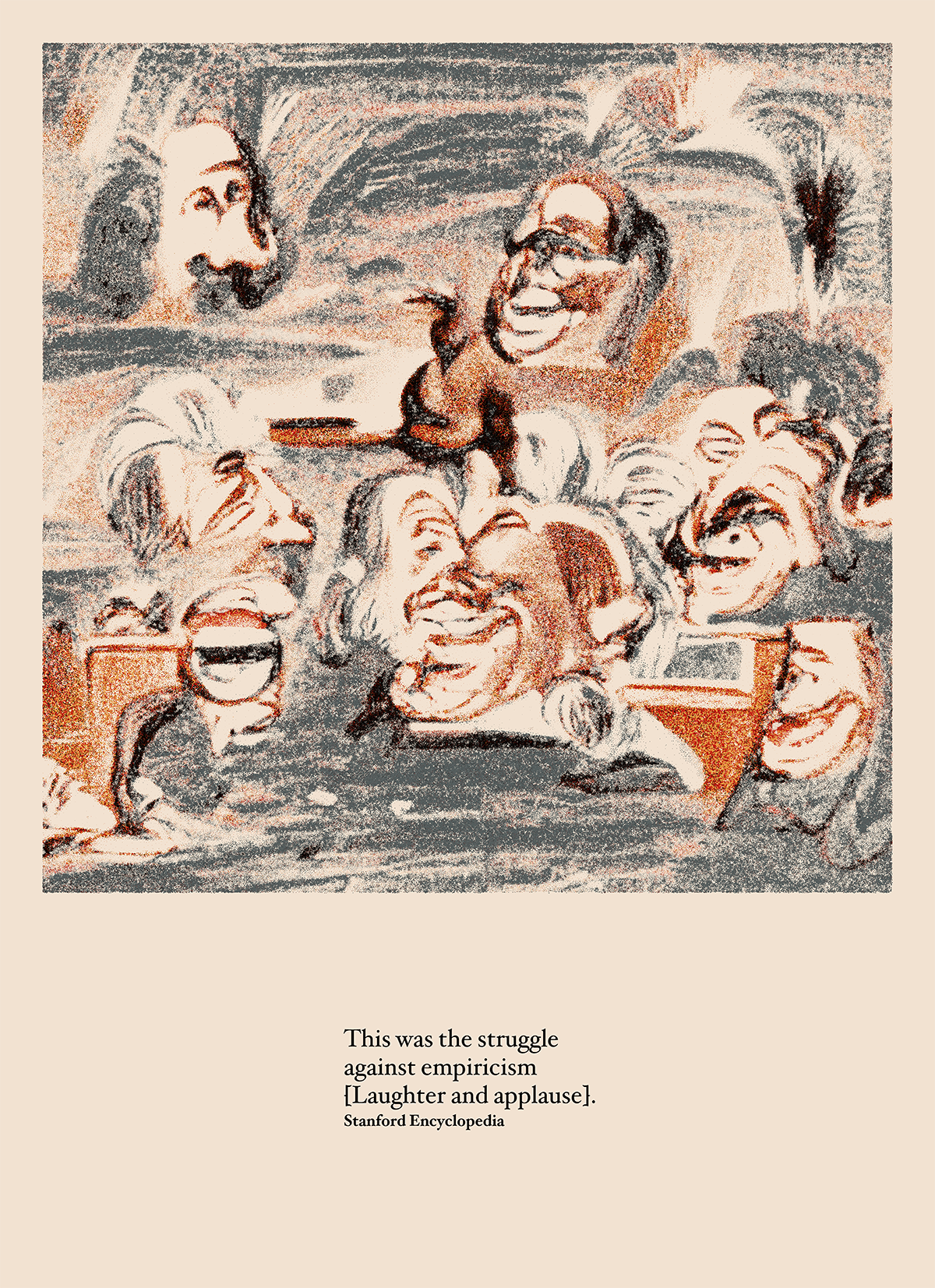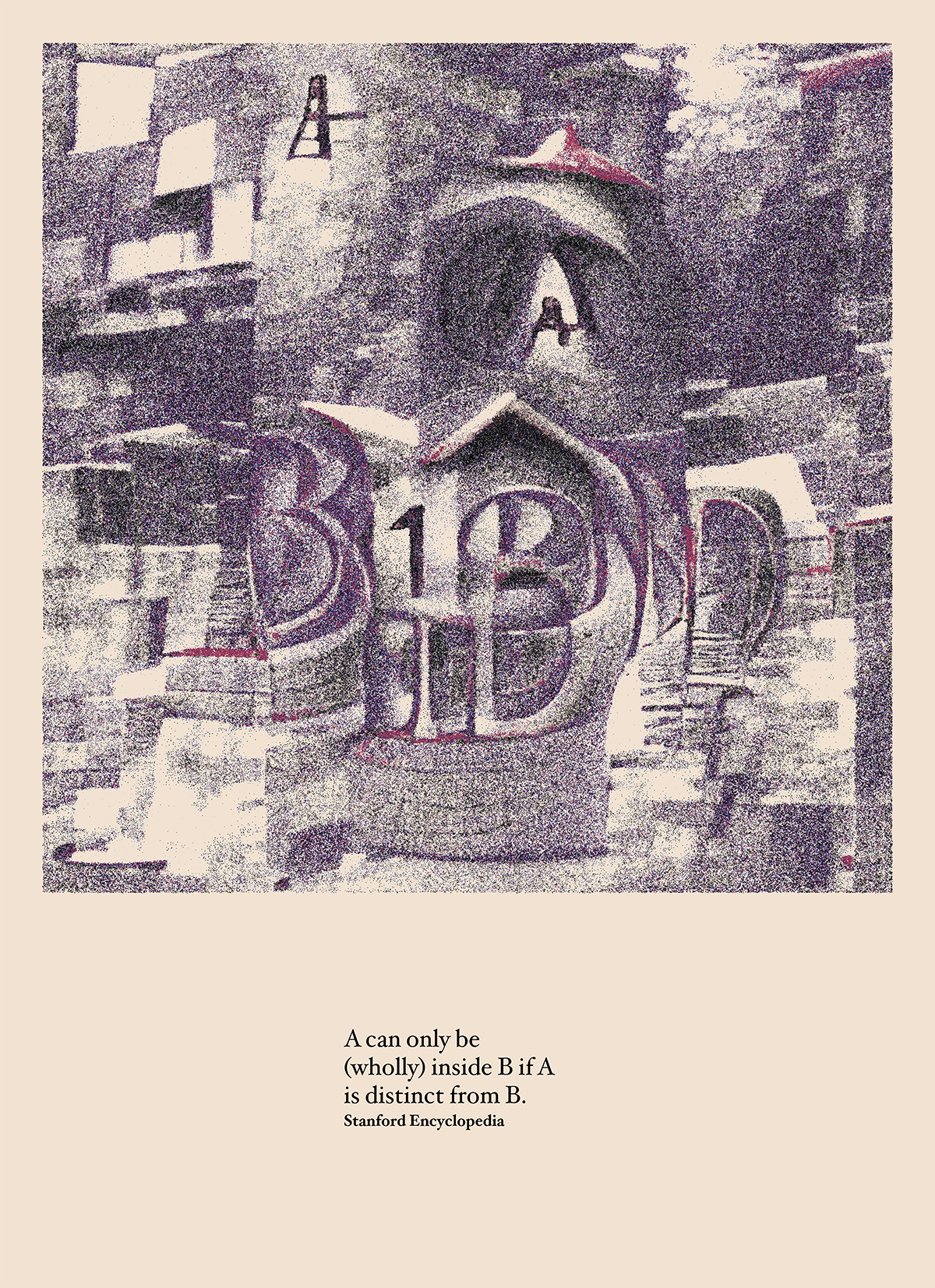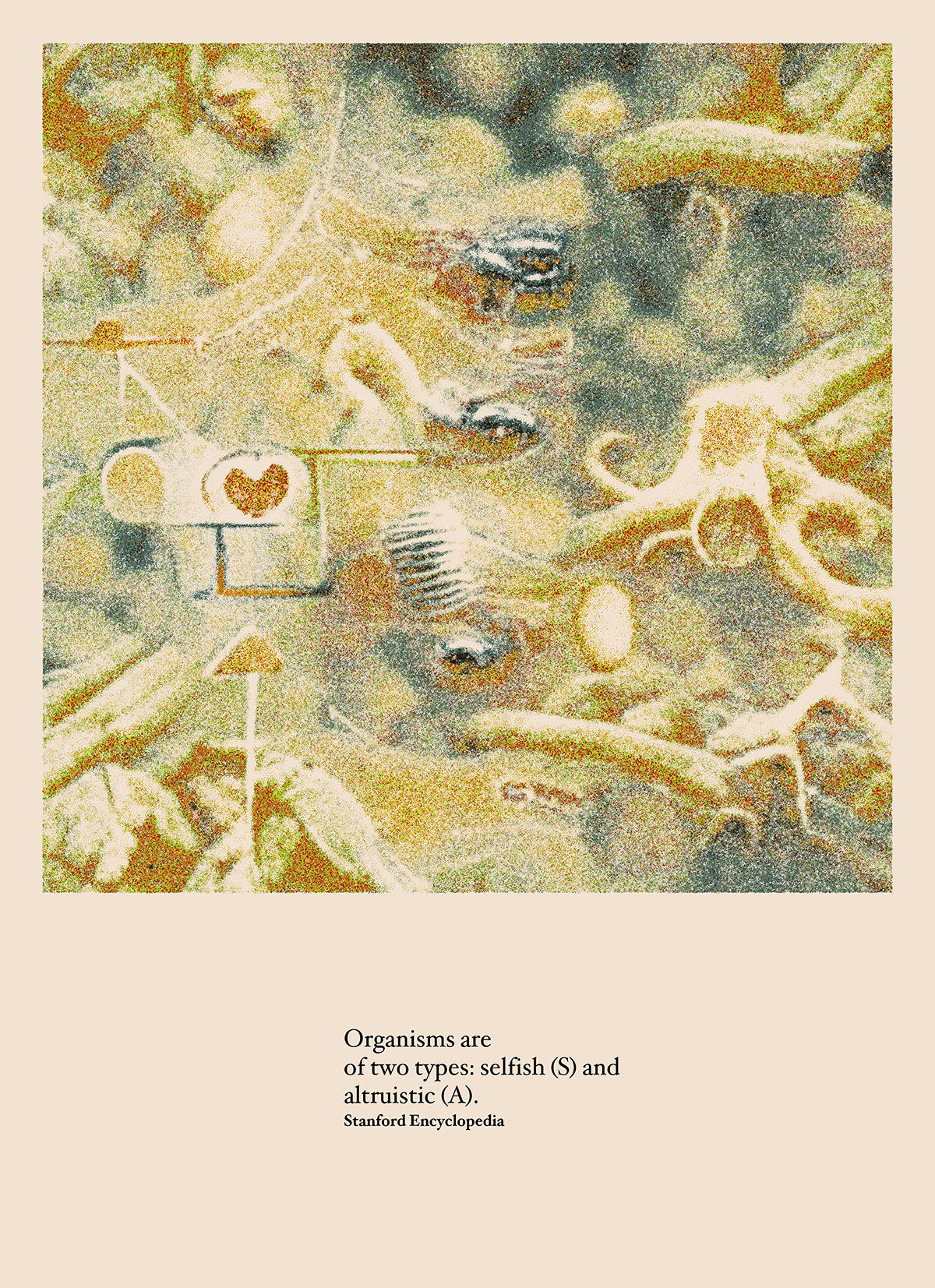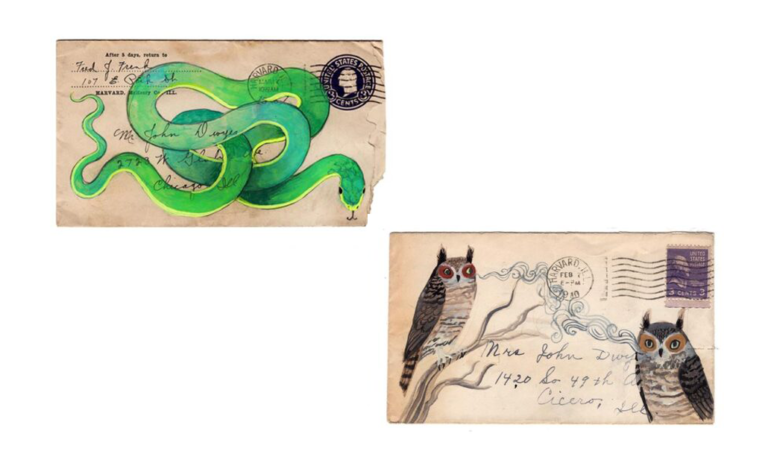
Some of the results are below. Other examples are posted on his twitter-feed: @MaxNoichl.

I then selected some haiku that I particularly liked, and ran them through vqgan+clip. This is a computer program that tries to find images that closely match texts, with variable success and often entertaining misunderstandings. It has been put together by @RiversHaveWings, @advadnoun, and @jbusted1. They all produce very exiting work, so I can only recommend giving them a look. If you want to try something like this yourself, here is a good starting-point. It’s surprisingly easy! I then did some postprocessing on the resulting images, going for an effect somewhere between stippling and silk-screen printing.

Maximilian Noichl (University of Vienna), whose visualizations and data analysis has been featured before on Daily Nous (see here), has taken up a new project: using computers to find haiku in the text of the Stanford Encylopedia of Philosophy (SEP) and make art to accompany them. 






